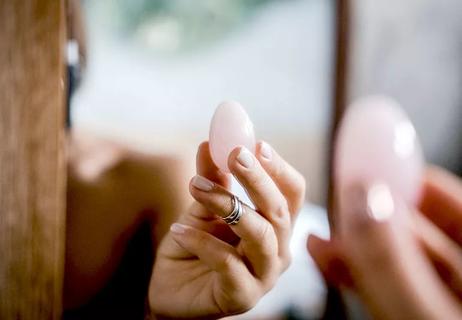Choose 100% cotton (the best material for underwear) and put on a fresh pair (at least) daily

Bikinis, briefs, boy shorts, thongs. Underwear comes in a dizzying array of types. Maybe you’ve been wearing the same style since high school, or maybe you love trying out new fits and colors.
Advertisement
Cleveland Clinic is a non-profit academic medical center. Advertising on our site helps support our mission. We do not endorse non-Cleveland Clinic products or services. Policy
But if you’re having problems “down there,” your underwear could be to blame. You may need to rethink what you’re putting next to your skin.
Ob/Gyn Erica Newlin, MD, explains how underwear can affect your vaginal health and how to avoid common underwear mistakes.
Underwear creates a barrier between you and your clothes. It protects your genitals from tight-fitting or rough pants and absorbs natural vaginal discharge.
But the wrong kind of underwear can cause issues with your vagina and vulva, like:
You could get rid of underwear altogether — although that’s not a great option for your day-to-day life, says Dr. Newlin. A better approach is to switch up your underwear game to provide a gentler environment for your private parts. Here are five tips to try.
The best material for underwear is cotton: It’s less likely to cause an allergic reaction than synthetic fabrics (important if you have sensitive skin). And it’s breathable. Cotton undies wick away excess sweat and moisture that bacteria and yeast thrive on.
Dr. Newlin answers some common questions about underwear material.
Yes. If you’re extra-sensitive, stick to plain white cotton.
Advertisement
Read the label to be sure. Some underwear brands feel like cotton but still contain synthetic fibers.
Yes, non-cotton undies are fine to wear once in a while. But for regular wear, all-cotton is best.
That small panel doesn’t fully protect you from the synthetic fabric and won’t breathe like 100% cotton.
Thongs aren’t necessarily bad for you. A study found they don’t increase the risk of yeast infections, bacterial vaginosis or urinary tract infections. So, if you’ve been wearing thongs for years without issues, great. Keep wearing what’s comfortable for you.
“For someone who has recurrent vaginal or vulvar problems, I’d suggest something looser and more breathable,” advises Dr. Newlin. “And, of course, make sure it’s 100% cotton.”
Changing your underwear daily is good personal hygiene. It prevents odors, bacterial growth and exposure to fecal matter (yes, poop can get on your underwear).
Consider changing your underwear more frequently if they become wet, stained or the buildup of vaginal fluids bothers you.
“Some people wear panty liners to absorb this natural discharge, but that’s not necessary,” clarifies Dr. Newlin. “Panty liners decrease breathability and can cause irritation. It’s best to avoid wearing them all the time unless you need them for incontinence or your period.”
While Dr. Newlin doesn’t recommend going commando during the day, nighttime is a different story.
“It can be helpful to go without underwear at night, particularly if you have a yeast infection or vulvar irritation,” she says. “Wearing loose boxer shorts or pajamas increases air flow to the area and promotes healing.”
Many detergents leave a residue on clothes that can cause vulvar irritation and itching. Look for hypoallergenic detergents that are fragrance- and dye-free. Some people also find it helps to put their underwear through the rinse cycle twice, notes Dr. Newlin.
And wash new underwear before wearing them. This step removes any chemicals from the manufacturing, storage, transport or sale of the product.
Vulvar burning, itching and pain can disrupt your life. Let a healthcare provider know if you have any ongoing symptoms. There are many causes, and the treatments can be quite different depending on the condition. And many people who have vulvar itching assume it’s a yeast infection.
“When we investigate, we often find other conditions such as contact dermatitis or eczema,” says Dr. Newlin. “Once we know the cause, we can recommend an underwear-related strategy or other treatment to help you find relief.”
Advertisement
Advertisement
Learn more about our editorial process.
Advertisement

These herbal pellets aren’t backed by science and can be harmful

Instead of protecting you from infections, douching your vagina can do the very opposite

Most tears down there are mild and heal on their own, but some require medical treatment

A gynecologist shares what you can do (and what you can skip)

This hot seat might be too hot to try

Here’s the truth about these egg-shaped crystals, straight from the experts

These over-the-counter kits are 99% effective at identifying when you’re most fertile each month

Babies can get congested easily, but you can calm their cough by keeping them hydrated, using nasal drops and running a humidifier

Weight loss may cause loose, sagging skin and muscle loss to your rear

Several conditions, like vitiligo and fungal infection, can cause a loss of pigmentation, leading to white spots or patches on your skin